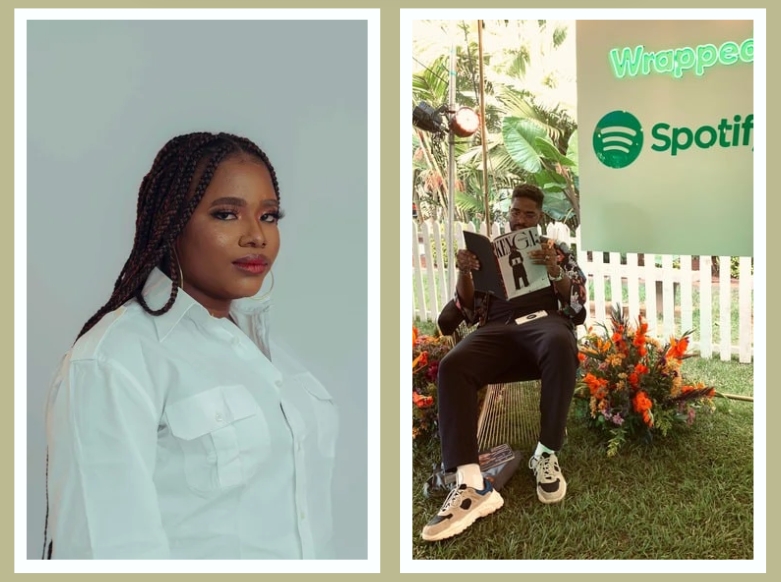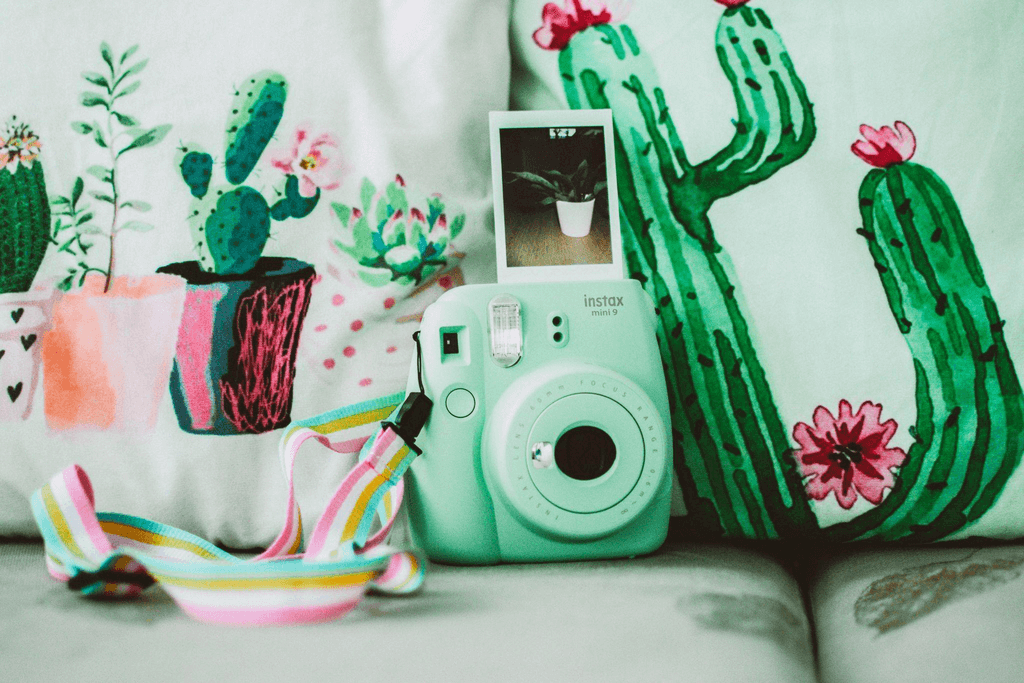About a year ago I discovered Korty’s YouTube channel and I was stunned by the feeling after consuming her content. She executed content that caused an introspection of what I just consumed and what I had been consuming. I couldn’t wait to watch another.
Watching her content struck a cord because it felt mind-stimulating and simple at the same time. She told stories with such a sleight of hand where quality and detail are smuggled into seemingly simple content. She tells stories about Gen Z individuals in Nigeria, producing a space for them to find relatability and direction.
And her kind of content is part of why Ciugu Mwotia, a writer, argues that the African creator economy is positioned to profit the most when compared to other continents. He said:
“There has been a rising Afro-optimism among the continent’s people driven by a strong sense of individual responsibility, post-colonial mindset, entrepreneurship, and confidence in a shared African identity. Ostensibly, this demographic would be the biggest adherents and beneficiaries of the African creator economy.”
What portion of this kind of work is currently being produced in Africa? And how can we create a system and model that helps scale them?
Mainstream Content Is Not Sustainable
A lot of these creators create content that panders to a mainstream audience or an app’s fickle algorithm. Their content either consists of influencers advertising brands or lifestyle creators making generic vlogs. They are trapped on these social networks, exploited for their content, and overwhelmed by the number of trends they have to keep up with to stay relevant.
As this style of creating grows more common and more brands pay for it, creators noticed a pattern: with each paid post, they lose some of the trust that they established with their audience. But micro niche creators are seeing the most promising results. Some data shows that micro-creators are getting the best results for brands and businesses because they have a more intimate relationship with their following.
The newer wave of creators are not looking to build their brands and businesses on reach as the core metric. Attention is a limited resource and people can only consume so much content. So audiences want to prioritize what meets their needs and content they can easily relate with.
To better understand this, let’s explore how African creators are scaling their niches.
Niche creators have one thing in common, they started small and created a unique environment by producing specialized content. An infinity of subcultures outside the mainstream now thrives online, tribes are forming and millions of people are finding peers in different niches of culture. So it makes sense for creators to now tailor their content to this change.
Creators’ niches are at an intersection of their experience, specific knowledge, and their audience’s needs.
A great example of this is Flip, an editorial-style podcast that highlights the entrepreneurship ecosystem in Africa. Produced by Justin Norman and Sayo Folawiyo, it was inspired by Justin’s pursuit of entrepreneurial endeavors in South Africa. He learned quickly that his “Western” upbringing was not contextually relevant to this market. He needed a new frame of reference, which led him to conversations with practitioners across Africa, and these conversations turned into this podcast.
The Concept of Differentiation
These creators have a system: models they employ to produce a creator-market fit.
On the Internet, differentiation is free marketing. The best way creators build is by creating content around earned secrets. These are ideas that only they can create content about. They find ideas that other people haven’t discovered and synthesise them in new ways. The mainstream media covers a fraction of what happens in the world, so these creators create content that ventures beyond a narrow gaze and into the realm of forgotten stories. They define their own subculture instead of moulding themselves into existing ones.
In online writing, Emeka Ajene started writing and curating articles about the business and technology ecosystem in Africa. In podcasting, Aisha produces narrative storytelling about African women and the ways they navigate life as a result of their race and gender and Neptune3 Studios creates stories that depict what it means to be a young Nigerian.
These creators also leverage the idea of memory with a purpose. No matter how many messages they share, only ~12.5% show at the surface. Niching down also means thinking intentionally about the major things they want people to associate them with. It’s about how they’re perceived not a complete description of their skills: they balance being external specialists and internal generalists.
The African creator economy has been growing for over a decade now but these creators with deeper stakes are making the ecosystem take a better structure.
The Rise of Vertical Social Networks
In this essay on the rise of vertical social networks in the creator economy, Ilker Koksal explores consumer’s growing interest in vertical social networks, “According to eMarketer, Facebook lost over 2 million users under the age of 25 in 2018, setting a trend for 2019.” he says, “In fact, the reason why general social networks such as Facebook are becoming less interesting is the growing interest in vertical networks.
People now connect based on specific interests through vertical social networks that specialize in certain subjects.
Creators are engaging with more intentional platforms where they can leverage differentiation. Even more so, creators with large social media followings are moving to platforms where they can earn directly from their audiences instead of enriching platform owners.
YouTube has a host of categories from gaming to learning, and over time we’ve seen an unbundling of this space. Twitch is now the nucleus of online video for gaming and Teachable and Selar are more suitable for creators who want to teach their audience. Tayo Aina, a travel YouTuber that has garnered 350K+ subscribers by setting out to rediscover Africa, has created masterclasses on both Selar and Teachable on how to build a sustainable youtube business.
Moreover, as YouTube and Instagram have scaled, it’s tough to stand out in the sea of aspiring influencers. So TikTok used this dynamic to their advantage, appealing to creators seeking a “breakout moment” on less crowded platforms.
Kagan, a Tik Tok technology creator, combined this with his niche content to launch something focused, He caters to his local audience by creating tech videos that are tailored to Nigerians. From advising Nigerians on when to buy an iPhone in response to the drop of the iPhone 14 to content about configuring one’s Samsung in the case of a medical emergency, consuming his content feels like you’re being let in on a secret.
Choosing A Network Target.
I spoke to Alma Asinobi, an Instagram creator who transitioned to becoming a travel creator.
“The major thing that helped me transition was initially building my brand around my personality so when I switched it wasn’t that much of a change,” Alma says. “I focused on experimenting with my personal brand for a while so it was easy and sensible to then merge what I was doing offline with what I was doing online.”
Her transition significantly narrowed her audience and reduced her competition for people’s attention. She’s now building a social space for a specific community, travel enthusiasts. Alma explains why she chose to create travel content, “Travel is not a saturated niche in Nigeria, I weighed the warfront and picked a battle. It offered more visibility and international appeal.”
In eight months, Alma has experienced an expert accelerator effect because she changed her network target. Creators can’t serve everyone. These networks are modelled after tight-knit communities in the real world, rather than based on the common profit-making systems that are encouraged in mainstream content creation. It’s structurally different because creators can incorporate hyper specificity.
Creating A Monetisation Model
With this shift, creators can assemble a balance of revenue streams to match their style. The kind of brands they sponsor and the kind of products they create will be influenced by their perceived niche. They develop a cutting-edge partnership model by offering partnership opportunities only to advisors who serve their niche.
This makes them more relevant in that they have a specific competency they bring to the table with outside advisors. They can structure this as a true partnership or service-to-combination arrangement.
Alma Asinobi embodies this. She engages niche sponsorship products such as Safety Wing on her travel content and now offers trip planning services for Nigerians all whilst founding a company that will provide lifestyle pieces from artisans in the countries she travels.
Future Creator Capitalists
Although African Creators have scaled most aspects of niche creation, there’s still one concept that they are yet to engage in that western creators are.
Eric Jorgenson, an investor and creator, writes about how creators are combining their media products with a financial fund,
“Trust is critical for a business that takes responsibility for other people’s capital and this trust can be built effectively through media: writing, podcasting, and tweeting.”, he says, “Now that I’ve felt the power myself, I see the trend more and more clearly across a variety of creators and investors. I call them Creator Capitalists.”
These creators either start as investors and discovered media helped their business or started as creators who ended up investing as a result of their opportunities. A great example is, Tim Ferriss who sold a metric ton of books and podcast ads. But none of them tip the scale compared to what he earned from his Angel Investments in Twitter, Uber, and Shopify. His blog’s distribution, book’s notoriety, and connections to other early investors are what set up his success.
In Conclusion
With the internet, sustainable building starts with the creation of and experimentation with niches: small, trusting spaces, where creators can explore and connect in the smallest ways. People want to form connected networks rather than isolated silos.
These full-time content creators are connecting with niche audiences and scaling these networks to build financially sustaining businesses in the most organic way possible.



